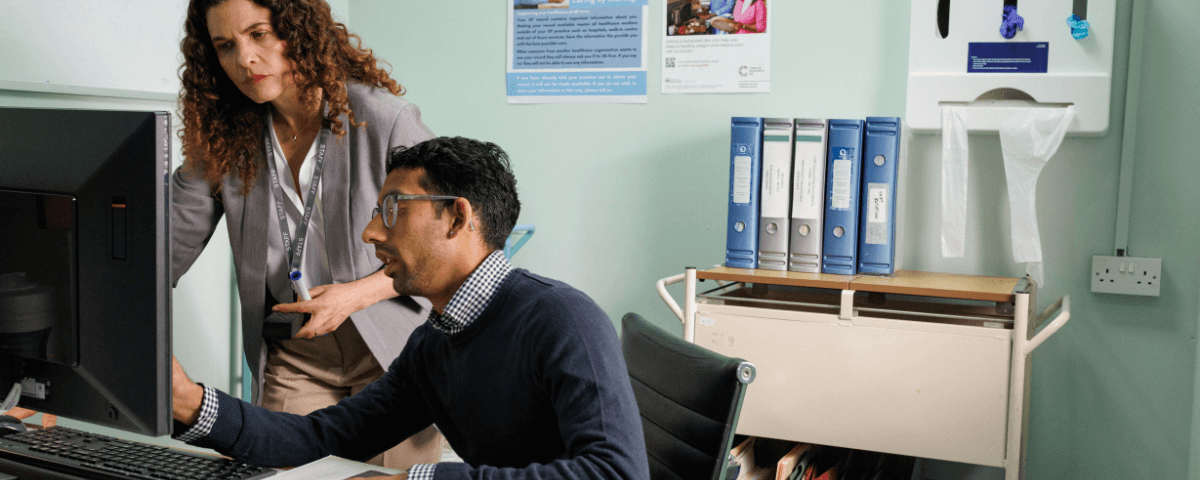
Last reviewed: 9 July 2025
Last reviewed: 9 July 2025
E–safety netting tools are electronic systems designed to improve the tracking and follow-up of patients who may be at risk of cancer. They can be integrated into electronic health records, or provided by a separate software. Typical functions include: clinician alerts, administrative tasking, templates for standardised codes, tracking dashboards, and additional support (e.g. prepopulated referral forms).
Consistent use of e-safety netting tools may reduce variation in safety netting practices, reduce the chance of diagnostic errors and delay and support quality improvement via the provision of better audit data around safety-netting
.Templates can provide structured fields for consistently capturing and coding information from patient consultations, such as whether safety netting advice was given or a follow-up appointment arranged.
Tools can also suggest or pre-populate relevant safety netting templates based on coded information - for example, a suspected lung cancer code triggering lung-specific safety netting actions.
These can prompt clinicians to follow up on patients with unresolved symptoms, abnormal test results or pending referrals.
Tools can generate letters, texts or e-mails including safety netting information for patients to refer back to.
Tools can help clinicians to track patients over time to check if they’ve engaged with safety-netting advice, investigations or referrals and ensure the appropriate follow-up occurs.
These can help practice teams identify patients across the practice who need to be followed-up so contact can be coordinated.
Tools can automate and record outreach to patients for example sending text reminders or letters to encourage attendance for tests or follow-up appointments.
Tools can support teams with assigning, tracking and managing safety-netting tasks across the practice to improve visibility, communication and accountability.
Tools can help teams to identify patient groups less likely to engage or re-present to support targeted follow-ups and reduce inequalities.
There are multiple e-safety netting tools available across the UK, all with different system compatibility, functions and potential cost. Black et al
have developed a framework for evaluating e-safety netting tools, which could aid health systems when deciding whether to implement a tool in their practice . The principles of a high-quality e-safety netting tool include:All patients registered will be e–safety-netted
All clinicians and primary care staff are responsible for e–safety-netting
Limit burden and cognitive bias by using automatic functions, where possible
Support diagnostic processes before, during, and after consultations
Monitor, auto-detect, and measure pathway process errors or deviations and alert the relevant people
Use simple processes that make it easy to access and transfer complex information
Spread responsibilities and roles within primary care that have an overall impact on the whole patient pathway
Support senior leadership to optimise safety strategies within a regular quality improvement program
Allow for patient interaction and feedback
There are currently no tools available that meet all of the criteria in the framework, but it is a useful guide to appraise whether an e-safety netting tool will add sufficient value in practice.
Below we’ve listed some examples of available safety netting tools that are compatible with the most commonly adopted electronic health systems used across the UK:
EMIS E-SN tool (Optum): this free to use tool includes features such as tracking direct access to investigations and urgent suspected cancer referrals, plus monitoring symptoms. The tool provides primary care staff with a way to record safety-netting advice and actions and to set reminders to ensure that the patient is followed-up. This is currently compatible with EMIS. Follow the links for more information about the tool, and how to use it in your practice.
SystmOne safety netting features: the free, built-in features of SystmOne allow health professionals to schedule tasks, use templates, and utilise SNOMED coding to track cancer-related tests and referrals. For more information, click here.
Vision safety netting features: free templates and workflows are built into Vision including custom templates for safety-netting, the ability to schedule tasks and alerts, use of read/SNOMED codes to trigger follow-up reminders, and ability to log diagnostic status and pending results. For more information, click here(PDF, 345 KB).
Ardens: fast track safety netting tools within Ardens uses templates that allow clinicians to track referrals and diagnostic test results and set setting safety netting alerts for follow-ups with patients. Ardens is compatible with SystmOne and EMIS (Optum). Note, this system has a cost associated. For more information on how to use Ardens, click here.
Black, G. B., et al. Harnessing the Electronic Health Care Record to Optimize Patient Safety in Primary Care: Framework for Evaluating e–Safety-Netting Tools. JMIR Medical Informatics. 2022.